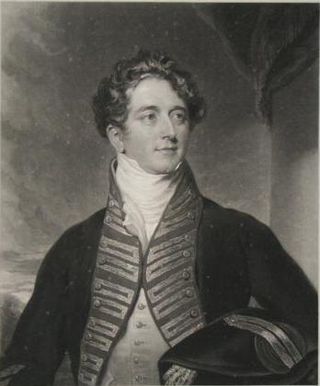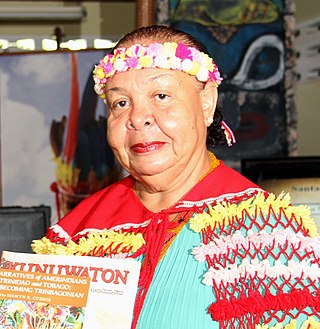The history of Trinidad and Tobago begins with the settlements of the islands by Indigenous First Peoples. Trinidad was visited by Christopher Columbus on his third voyage in 1498,, and claimed in the name of Spain. Trinidad was administered by Spanish hands until 1797, but it was largely settled by French colonists. Tobago changed hands between the British, French, Dutch, and Courlanders, but eventually ended up in British hands following the second Treaty of Paris (1814). In 1889, the two islands were incorporated into a single political entity. Trinidad and Tobago obtained its independence from the British Empire in 1962 and became a republic in 1976.

This article is about the demography of the population of Trinidad and Tobago including population density, ethnicity, education level, health of the populace, economic status, religious affiliations and other aspects of the population.

The Kalinago, formerly known as Island Caribs or simply Caribs, are an Indigenous people of the Lesser Antilles in the Caribbean. They may have been related to the Mainland Caribs (Kalina) of South America, but they spoke an unrelated language known as Island Carib. They also spoke a pidgin language associated with the Mainland Caribs.

Rose of Lima, TOSD was a member of the Third Order of Saint Dominic in Lima, Peru, who became known for both her life of severe penance and her care of the poverty stricken of the city through her own private efforts. Rose of Lima was born to a noble family and is the patron saint of embroidery, gardening and cultivation of blooming flowers. A lay member of the Dominican Order, she was declared a saint by the Catholic Church, being the first person born in the Americas to be canonized as such.
Parang is a popular folk music originating from Venezuela and Trinidad and Tobago that was brought to Trinidad and Tobago by Venezuelan migrants who were primarily of Amerindian, Spanish, Mestizo, Pardo, and African heritage, something which is strongly reflected in the music itself. The word is derived from two Spanish words: parranda, meaning "a spree”, and parar meaning "to stop".

Arima, officially The Royal Chartered Borough of Arima is the easternmost and second largest in area of the three boroughs of Trinidad and Tobago. It is geographically adjacent to Sangre Grande and Arouca at the south central foothills of the Northern Range. To the south is the Caroni–Arena Dam. Coterminous with Town of Arima since 1888, the borough of Arima is the fourth-largest municipality in population in the country. The census estimated it had 33,606 residents in 2011.

The Panyols are a pardo or moreno (tri-racial) ethnic group in Trinidad and Tobago of Afro-Spanish-Indigenous descent, primarily of mixed South American Amerindian, Trinidad and Tobago Amerindian, Afro-Trinidadian, Afro-Venezuelans and Spanish descent. The name is a derivation of the word 'español', as well as the community's settlement in what became predominantly cocoa cultivated regions of Trinidad. Also referred to as Pagnols or Payols, the panyol communities draw cultural influence from both sides of the Gulf of Paria, and are predominantly found within the Northern Range rainforest mountains and valleys of Trinidad, with South American cultural influences most predominantly derived from regions around the Orinoco, and Caura River, Venezuela.

Spanish Missions in Trinidad were established as part of the Spanish colonisation of its new possessions. In 1687 the Catholic Catalan Capuchin friars were given responsibility for religious conversions of the indigenous Amerindian residents of Trinidad and the Guianas. In 1713 the missions were handed over to the secular clergy. Due to shortages of missionaries, although the missions were established they often went without Christian instruction for long periods of time.

Hinduism in Trinidad and Tobago is the second largest religion. Hindu culture arrived to Trinidad and Tobago in 1845, with the arrival of the first Indian indentured laborers, the overwhelming majority of which were Hindu. According to the 2011 census there were 240,100 declared Hindus in Trinidad and Tobago.
Valentina Medina, aka Iere, born in Mount Pleasant, Arima, was the fifth Carib Queen since the introduction of the title in 1875.
John Albert Bullbrook was an author, archaeologist and archaeological historian, who went to Trinidad in 1913 as a petroleum geologist. He began his archaeological career in 1919, pioneering the search on the indigenous population of Trinidad.

Sir Ralph James Woodford, 2nd Baronet, was a British colonial administrator who was the longest-serving governor of Trinidad. Young and energetic, from 1813 he sought to bring order to Trinidad society and greatly improved the public infrastructure, especially in Port of Spain. At the same time, he institutionalised class and racial divisions and was not in favour of emancipation. His governorship was cut short by his death at sea.

Indigenous peoples in Guyana, Native Guyanese or Amerindian Guyanese are Guyanese people who are of indigenous ancestry. They comprise approximately 9.16% of Guyana's population. Amerindians are credited with the invention of the canoe, as well as Cassava-based dishes and Guyanese pepperpot, the national dish of Guyana. Amerindian languages have also been incorporated in the lexicon of Guyanese Creole.
Maximilian Forte is a professor of anthropology at the Concordia University Department of Sociology and Anthropology in Montreal, Quebec, Canada.

Trinidadians and Tobagonians, colloquially known as Trinis or Trinbagonians, are the people who are identified with the country of Trinidad and Tobago. The country is home to people of many different national, ethnic and religious origins. As a result, Trinidadians do not equate their nationality with race and ethnicity, but with citizenship, identification with the islands as whole, or either Trinidad or Tobago specifically. Although citizens make up the majority of Trinidadians, there is a substantial number of Trinidadian expatriates, dual citizens and descendants living worldwide, chiefly elsewhere in the Anglosphere.
Events in the year 2018 in Trinidad and Tobago.
The Carib Queen is the leader of the Indigenous community in Trinidad and Tobago. The Queen, whose title was established in 1875, is based at the Santa Rosa First Peoples Community in Arima, Trinidad and Tobago. The position is a lifetime appointment.

Jennifer Cassar was a Trinidadian cultural activist and civil servant. Cassar served as the Carib Queen, a leader of the Santa Rosa First Peoples Community and the indigenous community in Trinidad and Tobago, from 2011 until her death in 2018. Cassar, a career civil servant and the sixth Carib Queen since the title's creation in 1875, was the first Carib Queen to hold a secular job.

The history of Tobago covers a period from the earliest human settlements on the island of Tobago in the Archaic period, through its current status as a part of the Republic of Trinidad and Tobago. Originally settled by indigenous people, the island was subject to Spanish slave raids in the sixteenth and early seventeenth century and colonisation attempts by the Dutch, British, French, and Courlanders beginning in 1628, though most colonies failed due to indigenous resistance. After 1763 Tobago was converted to a plantation economy by British settlers and enslaved Africans.
Nona Lopez Calderon Galera Moreno Aquan is Carib Queen of the Arima First Peoples. She was revealed to the community on May 29, 2019, after a traditional ceremony at the community's centre in Arima.












